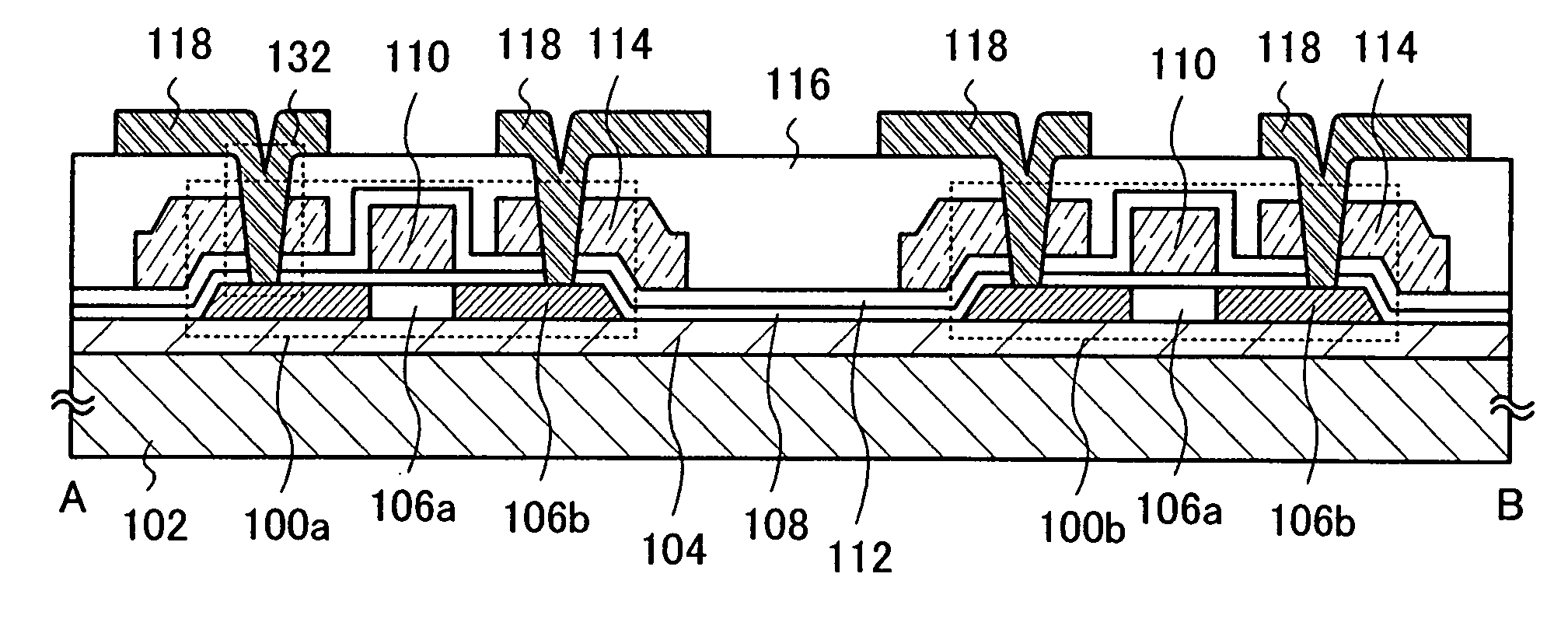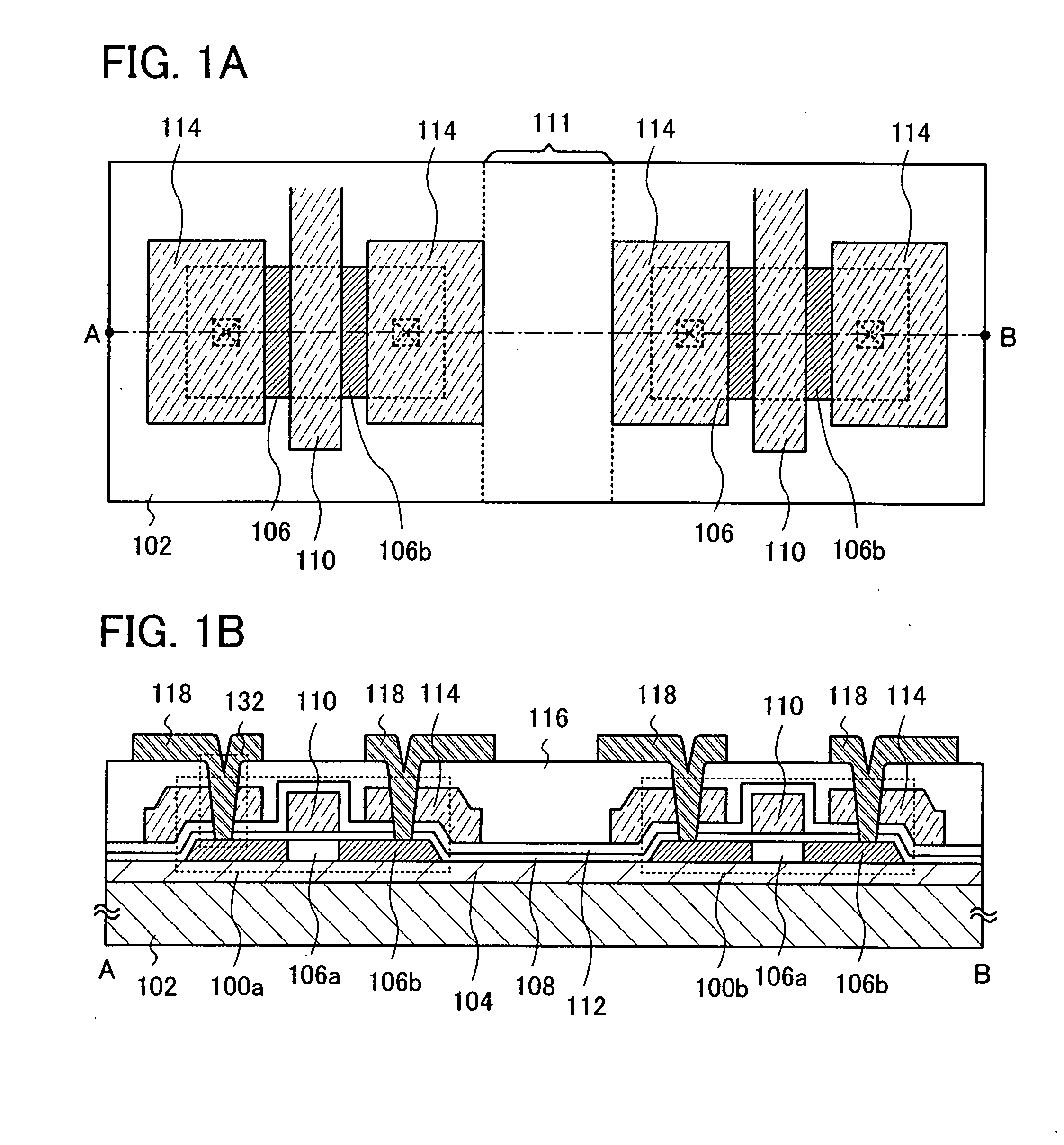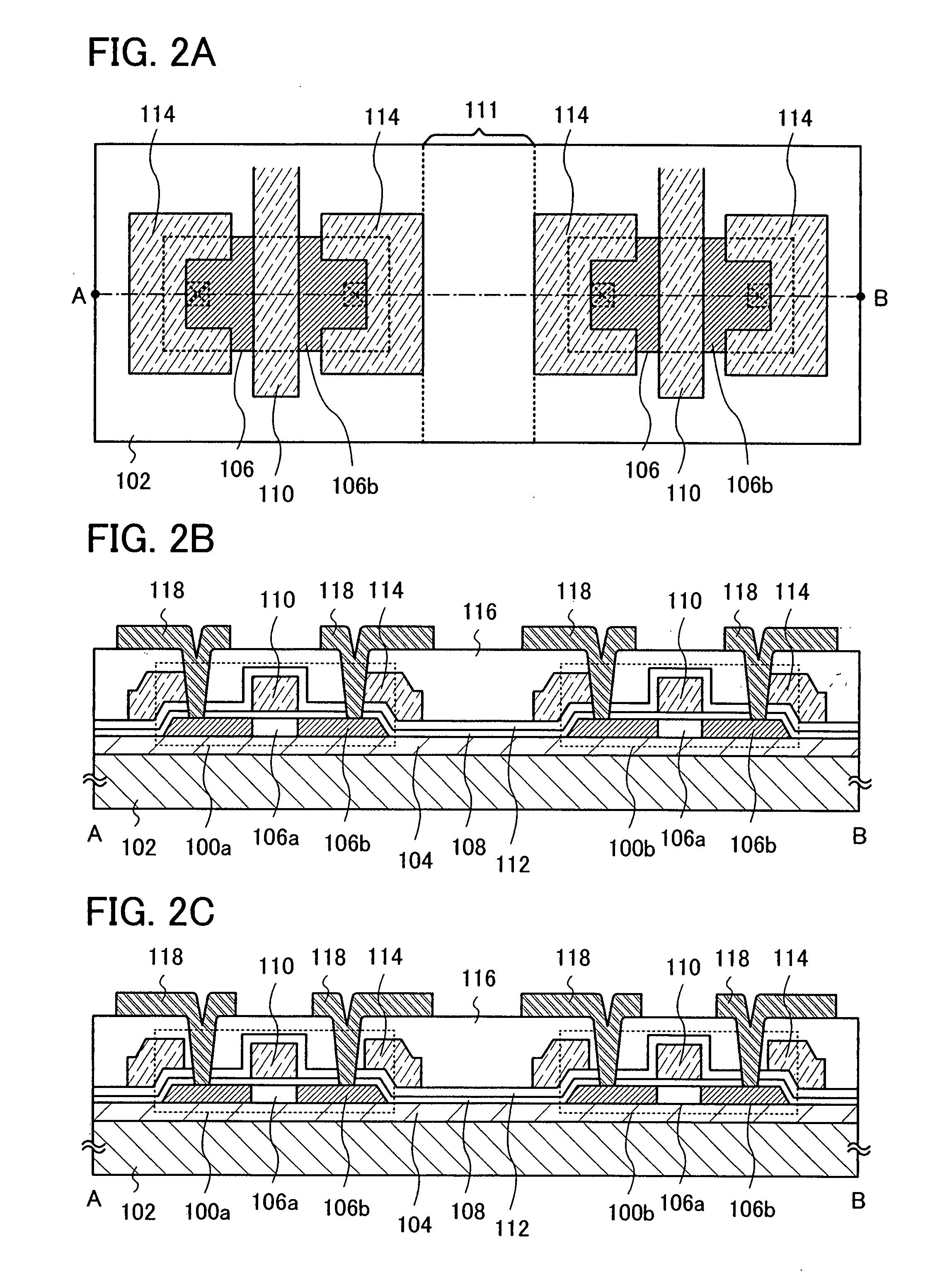Semiconductor device
a technology of semiconductor devices and semiconductors, applied in the direction of semiconductor devices, electrical devices, transistors, etc., can solve the problems of reducing the yield of products and adversely affecting the characteristics of elements, so as to improve the yield and reliability of semiconductor devices, prevent the damage of elements, and improve the effect of semiconductor device performan
- Summary
- Abstract
- Description
- Claims
- Application Information
AI Technical Summary
Benefits of technology
Problems solved by technology
Method used
Image
Examples
embodiment mode 1
[0049]In this embodiment mode, an example of the semiconductor device of the present invention is described with reference to drawings.
[0050]The semiconductor device of the present invention has a structure for preventing an element provided in the semiconductor device, such as a transistor, from being damaged even in the case where the semiconductor device is stressed by being applied with force such as bending. In this embodiment mode, as an example of the structure, the case is described in which a film functioning as a protective film is provided above a semiconductor film included in the transistor.
[0051]FIGS. 1A and 1B show an example of the semiconductor device described in this embodiment mode. Note that FIG. 1A shows a top plan view and FIG. 1B shows a cross-sectional view taken along a line A-B in FIG. 1A.
[0052]The semiconductor device shown in FIGS. 1A and 1B includes thin film transistors 100a and 100b each including at least a semiconductor film 106, a gate insulating f...
embodiment mode 2
[0069]In this embodiment mode, an example of a method for manufacturing the semiconductor device described in Embodiment Mode 1 is described with reference to drawings. Note that in this embodiment mode, the process is described in which after an element such as a thin film transistor is formed over a supporting substrate, the element is released from the supporting substrate to be transferred to another substrate.
[0070]First, a release layer 122 is formed over one surface of a substrate 120. Subsequently, an insulating film 104 that functions as a base and an amorphous semiconductor film (for example, a film containing amorphous silicon) are formed (see FIG. 4A). Note that the release layer 122, the insulating film 104, and the amorphous semiconductor film can be sequentially formed.
[0071]As the substrate 120, a glass substrate, a quartz substrate, a metal substrate, a stainless steel substrate, or the like can be used. In the case of using such a substrate, the area and the shape ...
embodiment mode 3
[0111]In this embodiment mode, the case where, in a thin film transistor of the semiconductor device described in Embodiment Mode 1 or 2, an insulating film is formed to be in contact with a side surface of the first conductive film functioning as a gate electrode and an LDD region is formed below the insulating film is described with reference to drawings.
[0112]The semiconductor device described in this embodiment mode includes the thin film transistors 100a and 100b, and insulating films 144 are provided to be in contact with a side surface of the first conductive films 110 functioning as gate electrodes, which are included in the thin film transistors 100a and 100b (see FIGS. 7A and 7B). The insulating films 144 are also referred to as side walls, and a structure in which LDD regions are provided below the insulating films 144 can be employed. Note that FIG. 7A shows a structure in FIGS. 1A and 1B in which the insulating films 144 and the impurity regions 106c functioning as LDD ...
PUM
 Login to View More
Login to View More Abstract
Description
Claims
Application Information
 Login to View More
Login to View More - R&D
- Intellectual Property
- Life Sciences
- Materials
- Tech Scout
- Unparalleled Data Quality
- Higher Quality Content
- 60% Fewer Hallucinations
Browse by: Latest US Patents, China's latest patents, Technical Efficacy Thesaurus, Application Domain, Technology Topic, Popular Technical Reports.
© 2025 PatSnap. All rights reserved.Legal|Privacy policy|Modern Slavery Act Transparency Statement|Sitemap|About US| Contact US: help@patsnap.com



